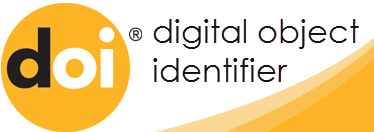INTEGRATING DIGITAL TECHNOLOGIES INTO ACADEMIC WRITING INSTRUCTION: BENEFITS, CHALLENGES, AND CONSIDERATIONS FOR ACCESS, EQUITY, AND PEDAGOGY
Abstract
This article examines the integration of digital technologies into academic writing instruction. It explores the potential benefits, such as enhanced writing processes, multimodal composition, and increased access and flexibility for students. However, the article also discusses the challenges and considerations related to access and equity, including digital divides and accessibility for students with disabilities. Additionally, it highlights the pedagogical implications, emphasizing the need for instructors to effectively integrate digital tools in ways that enhance the learning experience. Overall, the article concludes that while digital technologies hold substantial promise for academic writing instruction, institutions and instructors must ensure equitable and accessible implementation to support diverse student needs.
References
Betts, K., & Lau, F. (2015). Engaging adult learners through interactive, technology-enhanced learning experiences. In P. Oehlkers & A. Hawkins (Eds.), Assessing online learning (pp. 41-58). Routledge, p. 48.
Burgstahler, S. (2015). Universal design in higher education: From principles to practice. Harvard Education Press, p. 23.
Coombs, N. (2010). Making online teaching accessible: Inclusive course design for students with disabilities. Jossey-Bass, p. 78.
Gillett-Swan, J. (2017). The challenges of online learning: Supporting and engaging the isolated learner. Journal of Learning Design, 10(1), 20-30, p. 25.
Jones, R. H. (2016). Spoken discourse. Bloomsbury Publishing, p.123.
Resta, P., & Laferrière, T. (2015). Digital equity and intercultural education. Education and Information Technologies, 20(4), 743-756, p. 748.
Smith, B. E. (2018). Composing across modes: A critical sourcebook. Bedford/St. Martin's, p.45.
Spoel, I., Schuurkamp, M., & Vreman-de Olde, C. (2014). Technology-enhanced writing instruction: Using online peer review and digital delivery in a first-year writing course. Writing & Pedagogy, 6(2), 395-417, p. 402.
Ware, P. D., & Warschauer, M. (2005). Hybrid literacy texts and practices in technology-intensive environments. International Journal of Educational Research, 43(7-8), 432-445, p. 438.
Warnock, S., & Reardon, J. (2015). Teaching writing in the digital age: Using and abusing technology. Macmillan, p. 117.
Warschauer, M., & Matuchniak, T. (2010). New technology and digital worlds: Analyzing evidence of equity in access, use, and outcomes. Review of Research in Education, 34(1), 179-225, p. 187.
Williams, B. T. (2019). Multilingual multimodal composition: Composition studies and linguistic diversity. Routledge, p. 92.
Yancey, K. B. (2009). Writing in the 21st century: A report from the National Council of Teachers of English. National Council of Teachers of English, p. 5.
Yancey, K. B. (2018). A rhetoric of reflection. Utah State University Press, p. 67











